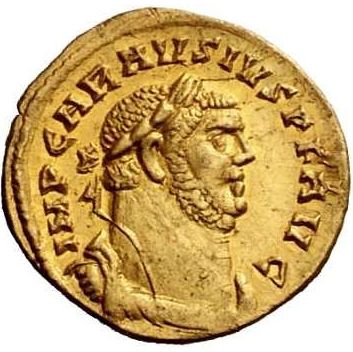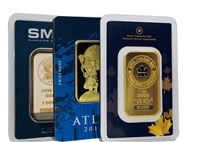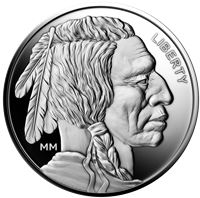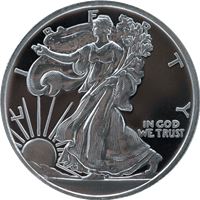Beginner's Guide to Investing in Precious Metals
Allocating some of your investment dollars to precious metals is a wise decision. But doing your due diligence before you make a purchase is even wiser.
You've come to the right place for answers about how to get started investing in precious metals.
Over my decade of experience as a precious metals analyst, I have been featured in publications such as Reuters, Forbes, Bloomberg (radio and TV), TD Ameritrade Network, Kitco News, and elsewhere. In short: You can trust my expertise.
This free guide will make buying precious metals easy to understand, with key things to know before you start investing. We will also be defining what metals we're actually talking about later in the article.
Best Ways to Invest in Physical Precious Metals
There are various ways to make a gold investment, and physical bullion can come in different forms. There are three main types of physical bullion: bars, coins, and rounds.
Coins
Coins are the most recognizable type of precious metal product. Coins made of gold and silver were produced as far back as the ancient world. Until the early 20th century, such gold coins were still issued by governments as everyday money.
Today, government mints still make precious metal coins. Instead of being used as money, these bullion coins are minted specifically for investors.
Bullion coins usually carry a design that relates to a national symbol of the issuing country. Examples include Canadian Maple Leafs, Gold Krugerrands from South Africa, and Chinese Panda coins.
Coin dealers will carry products, but they may also sell numismatic coins (rare coins).
Bars
Bars of precious metal are also called ingots. They are the most space-efficient way to stack precious metals. Unlike coins, they are not legal tender. Instead, they tend to come from private mints.
Thanks to their generic appearance, bars are usually the least expensive way to buy gold, silver, platinum, or palladium as well.
For the two reasons outlined above, bars are the preferred method for storing very large amounts of precious metal at the best price.
Rounds
Rounds are an interesting middle ground between coins and bars. They are shaped like coins, but have no legal tender status just like bars.
Some rounds date as far back as the 1970s, but the majority were made more recently. You will only tend to find them composed of gold or silver.
Silver rounds can come in all sorts of artistic designs. Sometimes they are also referred to as "medallions."
"Paper" Forms of Precious Metals
In addition to physical metals, there are also ways to invest in precious metals "on paper." In other words, you can own an investment product that is tied to the metals, but is not in physical form.
"Paper gold" comes in several forms. Each are discussed below.
Gold ETFs
ETF stands for exchange-traded fund. These are financial products that are backed by gold, silver, or platinum. The funds issue shares, which are traded like stocks.
The two most popular investment options for precious metal ETFs are the SPDR Gold Shares (GLD) and the iShares Gold Trust (IAU).
Shares cannot be redeemed for any physical metal. Instead, they are settled in cash when you sell. ETFs also charge annual fees for holding their shares. If you trade gold through a financial advisor, they will likely opt for gold ETFs.
Gold Mining Stocks
Often simply called "gold stocks" and "silver stocks," these are shares of companies that mine for precious metals.
Owning stocks of gold miners is an indirect way of investing in gold. The value of their shares generally go up when metals prices are rising.
Most mining companies trade as common stocks on exchanges. Although they can be a good investment, stock prices are usually more volatile than the price movements of gold prices. Several factors can influence this, such as economic growth.
Mining stocks may have more upside—potential for bigger gains—than the metals themselves. However, miners are more complex investments than buying gold or silver yourself. These companies can also pose a credit risk.
Gold Futures
Futures contracts are a commitment to buy a bulk amount of an asset or commodity at a future date. These contracts are traded on financial exchanges similarly to the stock market.
Gold futures are mainly used by large institutions such as banks, miners, jewelers, and gold dealers to hedge their positions.
In other words, buying or selling futures helps protect these institutions from prices falling (if they are a seller) or rising (if they are a buyer) too rapidly.
Some of the activity in futures markets is also by speculators, who try to predict which direction prices will move in the near future. Entering a position in the futures market requires a substantial investment of over $100,000.
Gold Mutual Funds
A so-called gold mutual fund is a mutual fund that invests in any of these forms of gold (miners, futures, ETFs).
Some investors prefer mutual funds as a hassle-free way to get exposure to the gold market in their investment portfolio.
All of the various paper forms of precious metals outlined above stand in contrast to buying physical bullion.
What Is "Bullion"?
Bullion is defined as highly pure, "investment-grade" precious metals. Bars and coins made of precious metal generally come in the form of bullion.
Bullion is distinct from jewelry, antiques, and collectibles that happen to be made of precious metals. This is based on strict purity standards.
To qualify as bullion, an item must be at least 99.5% pure metal. Virtually all jewelry, artwork, and antiques fall short of this requirement.

Gold Eagle and Silver Eagle coin comparison
The difference is also important due to pricing. Prices for bullion will always be very close to the melt value. A small premium above the melt value (or spot price) is added to cover the cost of labor, manufacturing, and the seller's overhead costs.
By contrast, there is always a large mark-up on jewelry and collectible items. This mark-up (or premium) is far above the intrinsic value of the product's metal content.
Even though antique collectibles and rare jewelry can be investments in certain contexts, they are in entirely different kind of asset classes from precious metal bullion. For this reason, if an investor is interested in adding gold, silver, platinum, or palladium to their portfolio, then bullion is the proper choice.
Follow These Tips When Buying Physical Precious Metals
Investing in precious metals is a straightforward process. There are nuances that will help you along the way, however.
Understanding these finer points will save you time and money as an investor. We will address them below.
Metals Prices Are Always Fluctuating
This concept is often poorly understood by most first-time investors. It can lead to confusion and frustration, so let's clear the air.
Where do metals prices come from? They are determined by supply and demand. In practice, this boils down to the number of buyers and sellers on financial exchanges where commodities are traded.
Prices go up when there are more buyers than sellers, and prices go down when there are more sellers than buyers. (This is an oversimplification, but the general principle is correct.)
This means that throughout the day, prices are constantly changing. The price of a given metal fluctuates every few seconds, just like the price of a stock.
So how is the price you pay for your precious metals calculated?
The price for your order is locked in at the time your purchase is finalized. This doesn't necessarily mean at exactly the time you pay—but it's at the moment you commit to pay.
If you cancel an order after committing to pay, the seller will charge a steep cancellation fee and any market loss. Otherwise, scammers could repeatedly "spoof" orders and cancel them, potentially bankrupting a precious metals seller.
Bullion Products Can Be Privately Minted or Government-Issued
There are two places where a finished precious metal product can come from. This applies regardless of which metal we're talking about.
Private Mints:
- Privately-minted bullion is usually slightly less expensive.
- Private mints can offer a wider variety of designs and artistic freedom.
Government Mints:
- Government-issued legal tender is backed by full faith and credit of the issuing government.
- Bullion coins are typically more liquid than bars or rounds.
Payment Methods May Vary by Seller
You will want to buy your metals from an established, reputable seller. This ensures the seller will be accountable if anything goes wrong with your order.
Ideally a trustworthy seller will accept several forms of payment. That may include credit card, check, bank wire, cash, and even cryptocurrency.
Know Your Customer (KYC) procedures are common in the bullion industry. They exist to protect the consumer from fraud. But bear in mind the process may delay delivery of your metals by a week or two.
Nonetheless, remember that prices are locked in when you commit to make a purchase. So you'll never be charged more if metals prices go up while you're waiting for delivery.
Think Ahead About Storage Plans and Options
Storing gold is a critical consideration with physical assets that have such a high economic value. There is a cost associated with storing precious metals. In most cases, the storage fee is about 1% (or less) of the value of your metals.
You may think, why would I pay someone to store my gold? That small cost must be weighed against the risk of storing those valuable metals in your own home. Aside from avoiding the liability of theft, the real estate where vaults are located is also heavily insured.
If you do opt for home storage, be sure to invest in a secure safe.
Also keep in mind, if you are purchasing precious metals for inclusion in an individual retirement account (IRA), then vault storage in a depository is required. Vaults are far more secure facilities than your house or a safety deposit box at the bank.
Only certain bullion items are eligible for your precious metals IRA, also known as a Gold IRA. Follow the link for a checklist of eligible products.
Understand The Different Precious Metals
The metals that qualify as "precious metals" are gold, silver, platinum, and palladium.
Sometimes, copper is categorized as a "semi-precious metal." You may also see rare metals like rhodium lumped together with the four precious metals.
The lack of physical investment products made of these other metals excludes them from our list.
Gold
Gold has at least 5,000 years of history as money. It is no longer used as currency for day-to-day transactions, but gold is still considered a reliable store of value. For example, most of the world's central banks still hold large reserves of gold bullion.
For the average investor, physical ownership of gold is a safe haven investment. This is an important role during economic downturns or periods of economic uncertainty. Owning gold is not necessarily the best way to make money in the short-run.

Gold aureus coin from antiquity.
Roughly half of the world's newly mined gold supply is used for jewelry. A small portion of the gold supply also goes toward technology and industry.
Yet even these tiny amounts of gold are vital for computers and aerospace technology, to name a few examples. In fact, many of these advancements of the modern world (e.g. electrical appliances, the computer industry) would not be possible without gold.
Silver
Silver remains a popular investment as a hedge against inflation. Inflation has the effect of devaluing fiat currencies.
Like gold, silver often comes in the form of jewelry in addition to silver coins and silver bars. Unlike stocks, a physical commodity like silver is a good option for portfolio diversification.

Silver shekel coin from antiquity.
The industrial uses for silver are incredibly diverse. This includes green energy (solar panels), smartphone screens, and many medical applications in hospitals. Among these many uses, you will find most are in growing industries.
Platinum
Platinum usage is concentrated in the automobile industry. It is used in the catalytic converters that reduce the harmful pollutants that come out of a car's exhaust.
In recent decades, platinum has also been used in coins and bullion bars for investment. Platinum has traditionally had a higher price than gold, but it has been less valuable over the past several years.

Modern platinum bar.
Like silver, about 50% of global demand for platinum comes from industrial sources. The other half is for investment purposes, which is what we're considering here.
Palladium
Many investors are not familiar with palladium. Palladium is the sister metal of platinum. It is likewise used heavily by car manufacturers for catalytic converters.
Palladium coins are made by the Royal Canadian Mint and United States Mint, but in rather small numbers. It is much rarer in the earth's crust than silver or gold.

Unrefined palladium ore.
Palladium occupies the opposite end of the demand spectrum compared to gold. Only about 10% of gold demand is for industrial uses, while over 90% of palladium consumption comes from industry.
Platinum, silver, and gold are all used extensively in jewelry, while palladium generally is not. The global reach of the jewelry market provides another source of demand for these precious metals in addition to investment and industry.
Invest in Precious Metals With Gainesville Coins
If you're ready to make your first purchase, check out some of our best-selling items below. You can shop our entire inventory of gold bullion and silver bullion by clicking on the links below that.
More gold and silver buying guide articles from Gainesville Coins:
How to Buy Gold and Silver: 5 Easy Steps
Investing In Gold: Everything You Need to Know
Best Way to Buy Silver: Guide to Buying Physical Silver
What NOT To Do When Buying Gold
Investing In Silver: Quick Guide for 2022
product

Everett Millman
Everett has been the head content writer and market analyst at Gainesville Coins since 2013. He has a background in History and is deeply interested in how gold and silver have historically fit into the financial system.
In addition to blogging, Everett's work has been featured in Reuters, CNN Business, Bloomberg Radio, TD Ameritrade Network, CoinWeek, and has been referenced by the Washington Post.






